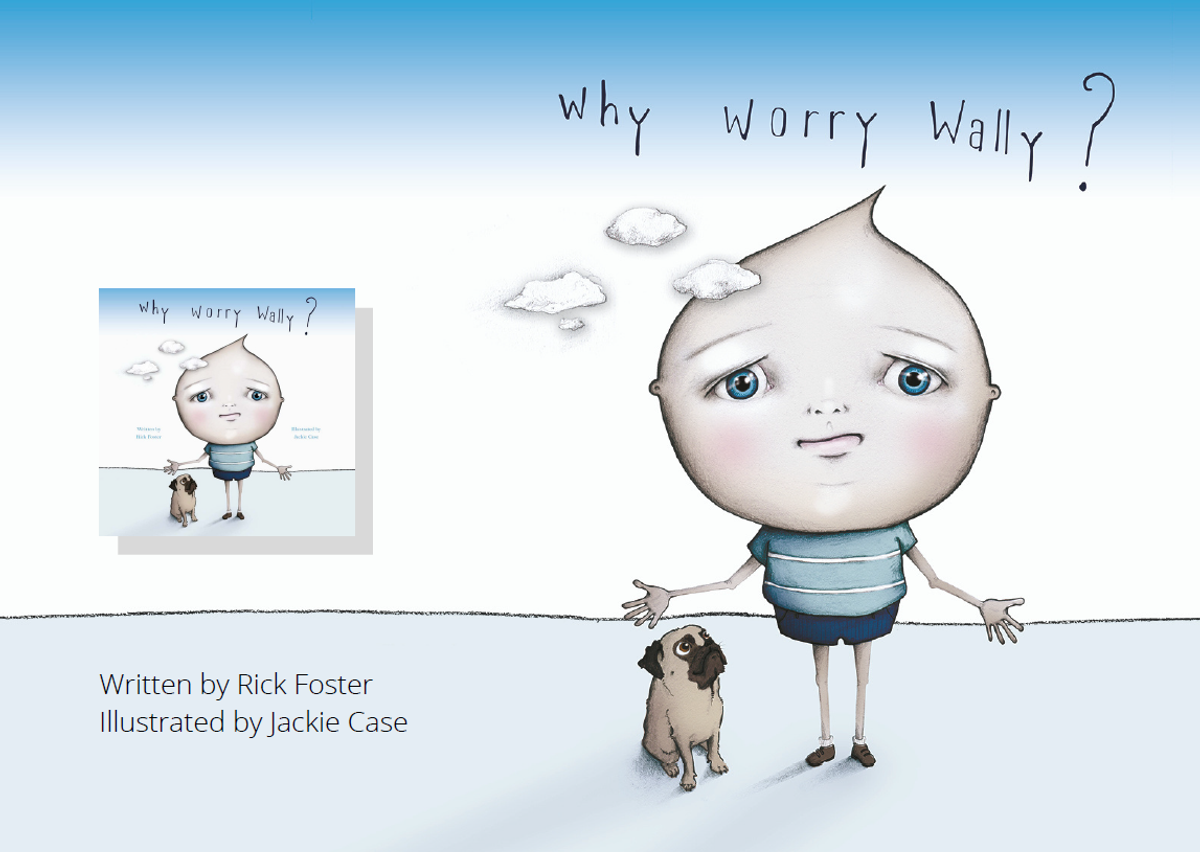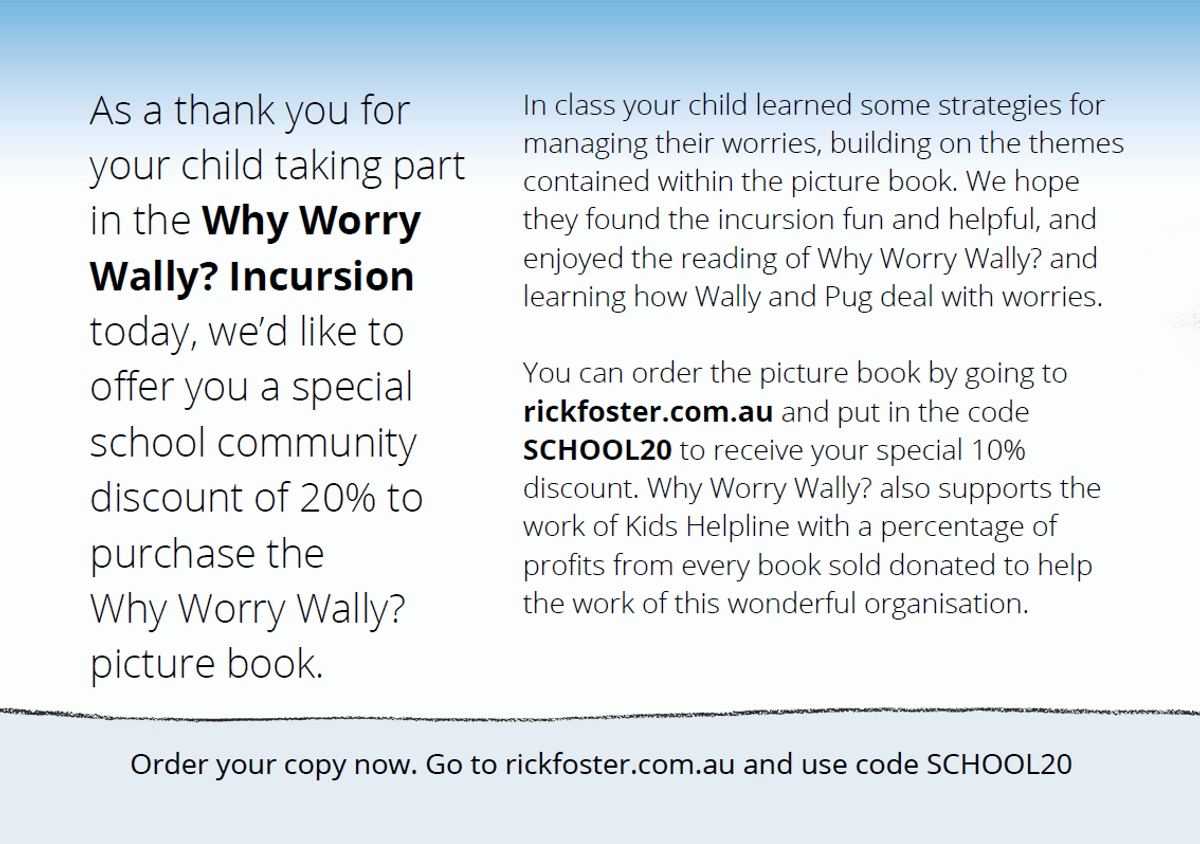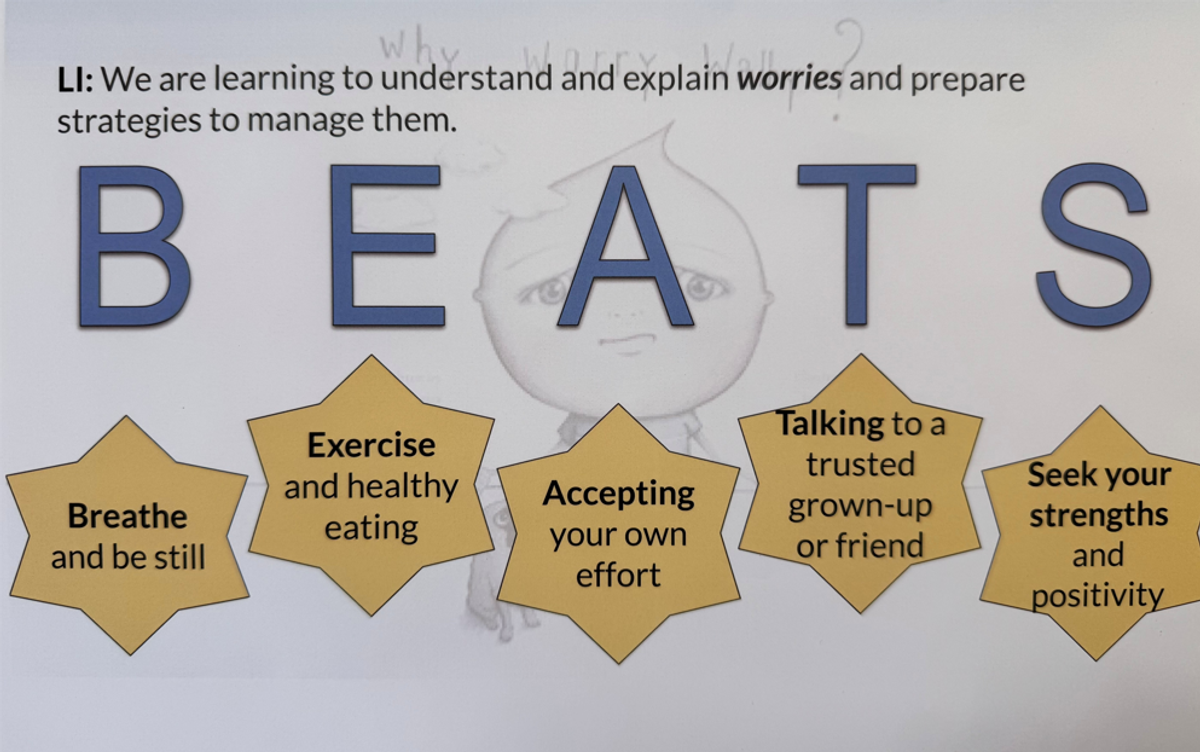Year 3/4 Bulletin

WELLBEING
Learning Intention:
To understand our emotions and prepare strategies to manage them.
Task:
“Why Worry Wally” was an incursion the school participated in to establish strategies for managing worries and anxiety.
Whole:
The session began with the class, in which Rick and Andy introduced themselves to the students. Rick read through his book, “Why Worry, Wally,” and had a brief discussion about what motivated him to write it. It is a story about a young character named Wally and how he copes with his ever-increasing worries. Andy highlighted strategies mentioned in the book and had students share their thoughts on what strategies they use themselves when they feel worried about things in their own lives.
Small:
During the session, Andy guided the students to categorize worries into three types: small, medium, and big. This activity focused on small and medium worries—those that might feel manageable with the right tools.
Students were asked to anonymously write down one small or medium worry and place it in a box. This activity encouraged self-reflection and provided a safe space to express their thoughts without fear of judgment.
The boxes were then used for a collaborative activity. In pairs, students randomly selected worries from the box and discussed them together. Guided by the techniques Andy had shared earlier in the session, they brainstormed strategies to help manage the worry they picked. This exercise allowed students to practice problem-solving and helped build empathy as they considered the feelings of their peers.
These are the strategies Rick and Alex suggested to the children:
Whole:
After discussing worries and strategies for managing them in pairs, we came back together for the "whole" part of the session. Students shared one anonymous worry they had read from the "worry box" and explained the strategies they thought could help the person who wrote it. Andy and Rick guided the discussion, encouraging empathy and creativity. This collaborative activity emphasised the importance of viewing worries as manageable and reinforced that everyone has the tools to support themselves and others.
The "worry box" itself was introduced as a strategy students could use at home to help communicate their feelings. By writing down a worry and placing it in the box, children can safely express their concerns, and parents or caregivers can use it as a starting point for supportive conversations. This simple but effective tool can encourage open communication and help normalize discussions about worries as part of daily life.
Reflection activity:
Back in the classroom, we discussed what it was like being part of the conversation with Rick and Andy, how it made us feel, and what strategies we can take away from it to help us improve how we look at worries in our own world. We completed a task based on the character Wally and how he was able to overcome his worries by focusing on what he is grateful for. Students identify further things in Wally’s world he was grateful for and some students, determine what they were grateful for in their own worlds, connecting the text to their own lives.
What you can do to further the learning at home:
Exercises for Kids Based on "Why Worry, Wally?"
Here are some fun and engaging exercises that can help children apply the lessons from "Why Worry, Wally?" and better manage their worries:
1. Worry Journal: Have children keep a "worry journal" where they write or draw about what makes them feel anxious. After writing about each worry, ask them to think about whether it’s something they can control or if it’s something that’s out of their hands. This will help them recognize that not all worries are as important or solvable as they might initially seem. Example prompt: "What is something that made you worry today? Can you do something about it, or is it better to let it go?"
2. Breathing Exercises: Teach children the power of deep breathing to help calm their minds when they feel anxious, just like Wally does in the book. Practice "belly breathing" where they place one hand on their belly, take a deep breath through the nose for four seconds, hold for four, and then exhale slowly for four. Repeat this a few times, and encourage them to use this technique whenever they feel nervous or worried. Exercise: "Let’s pretend we’re blowing up a balloon. Take a deep breath in (through the nose) and slowly breathe out (through the mouth) to inflate the balloon. How big can you make it?"
3. Positive Affirmations: After reading "Why Worry, Wally?", kids can create a list of positive affirmations or phrases to tell themselves when they start to worry. Encourage them to say these affirmations aloud every day or write them on sticky notes to put on their bedroom wall. Example affirmations:
"I can handle anything that comes my way."
"It’s okay to feel worried, but I can still be brave."
"I am in control of my thoughts."
1. Worry Box: Set up a "Worry Box" at home. When a child feels anxious, they can write or draw their worries on a piece of paper and place it in the box. Once the paper is in the box, the child can talk about their worries with a parent or guardian to understand them better. Over time, this ritual can help children separate themselves from their worries and deal with them in a healthy way. Prompt: "What is something you’re feeling worried about? Write it down and put it in your Worry Box. Now let’s talk about it together."
2. Wally’s Worry Challenge: Encourage kids to face their worries just like Wally did in the book. Create a list of everyday challenges or fears (e.g., speaking in front of the class, trying a new activity, or making a new friend) and challenge the child to try facing one small worry at a time. Celebrate each achievement to build their confidence and teach them that they are capable of overcoming their fears.Example challenge: "Can you try something new today, like introducing yourself to a new friend or trying a new food? If it feels scary, remember that you’re braver than you think!"
3. Mindful Moments: Encourage children to take a moment of mindfulness each day, similar to what Wally learns throughout the story. This could involve taking a quiet moment to sit and notice what’s around them, focusing on their breathing, or listening to soothing music. This practice helps them return to the present moment and feel less overwhelmed by anxious thoughts.Activity: "Sit quietly for a few minutes. Can you hear the birds outside? What colors do you see around you? Just focus on these things, and let your worries float away like clouds."
By engaging with these exercises, children can develop healthy coping mechanisms and a greater sense of control over their worries. "Why Worry, Wally?" provides a starting point for introducing young readers to important life skills such as managing anxiety, practicing mindfulness, and approaching challenges with a calm and positive mindset.
Rick Foster is currently offering 20% off your purchase of his book. Read the poster attached for more information.
Allira, Richard and Roula
Year 3/4 Team
Allira.Zeneli@education.vic.gov.au



